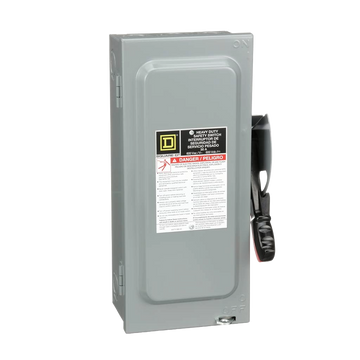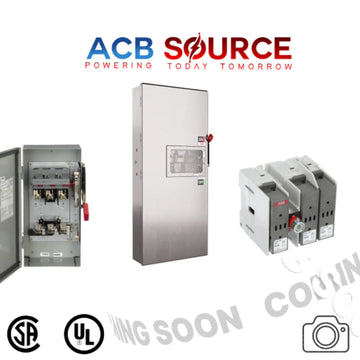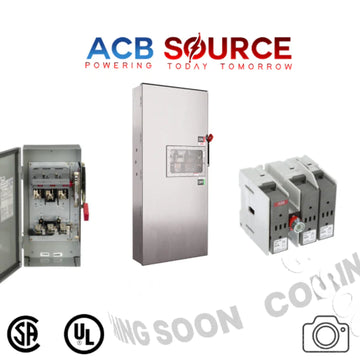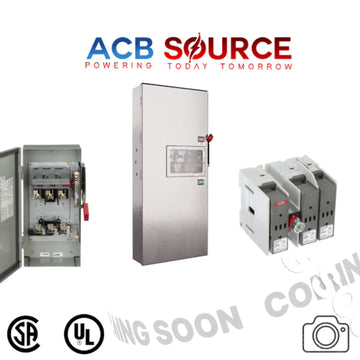In the realm of electrical systems and industrial applications, the choice of components can significantly impact performance, safety, and maintenance. One such crucial component is the fused disconnect switch. This article will provide an in-depth analysis of the advantages of fused disconnect switches, exploring their functionality, applications, and the benefits they bring to various industries.
Understanding Fused Disconnect Switches
What is a Fused Disconnect Switch?
A fused disconnect switch, often referred to simply as a disconnect switch or fused switch, is a device that provides a means to manually disconnect and isolate an electrical circuit from its power source. What sets it apart from a regular disconnect switch is the incorporation of fuses. These fuses act as protective devices, interrupting the circuit in case of overcurrent or short circuit, preventing damage to equipment and ensuring the safety of personnel.
Components of Fused Disconnect Switches
- Switch Mechanism: The primary function of a disconnect switch is to open or close an electrical circuit. The switch mechanism allows for manual control, enabling users to disconnect or reconnect the circuit as needed.
- Fuses: Fuses are integral to the design of fused disconnect switches. They are placed in series with the circuit and serve as sacrificial elements. In the event of a fault, such as overcurrent, the fuse will melt, breaking the circuit and preventing further damage.
- Enclosure: Fused disconnect switches are housed in protective enclosures. These enclosures provide insulation and shield the internal components from environmental factors, enhancing the overall durability and safety of the device.
Advantages of Fused Disconnect Switches
- Overcurrent Protection
The primary advantage of fused disconnect switches is their ability to provide effective overcurrent protection. Fuses act as the first line of defense, interrupting the circuit when the current exceeds the specified rating. This feature is crucial in preventing damage to connected equipment and minimizing downtime due to electrical faults.
- Enhanced Safety
Safety is paramount in any electrical system. Fused disconnect switches contribute significantly to electrical safety by allowing for the isolation of circuits during maintenance or repairs. The inclusion of fuses adds an extra layer of protection, reducing the risk of electrical fires and ensuring the well-being of personnel working on the system.
- Fault Isolation
In the event of a fault, such as a short circuit, fused disconnect switches facilitate quick and precise fault isolation. The fuses respond rapidly to abnormal current conditions, isolating the faulty section of the circuit and preventing the spread of the fault to other components.
- Ease of Maintenance
Maintenance of electrical systems is a routine necessity, and fused disconnect switches simplify this process. The ability to disconnect a circuit manually ensures a safe working environment for maintenance personnel. Additionally, the fuses can be easily replaced, restoring the protective function of the switch without requiring extensive downtime.
- Versatility in Applications
Fused disconnect switches find applications across various industries due to their versatility. Whether in manufacturing plants, commercial buildings, or utility substations, these switches can be adapted to different voltage levels and current ratings. Their flexibility makes them a reliable choice in diverse electrical environments.
- Compliance with Regulations
In many regions, electrical codes and regulations mandate the use of overcurrent protection devices. Fused disconnect switches not only meet these regulatory requirements but often exceed them by providing a robust and reliable solution for overcurrent protection. Using compliant devices ensures that installations adhere to safety standards and guidelines.
- Cost-Effective Protection
Compared to other forms of overcurrent protection, such as circuit breakers, fused disconnect switches can be a cost-effective solution. The initial investment is often lower, and the simplicity of the design contributes to reduced maintenance costs over the device's lifecycle.
- Remote Operation Options
Advanced fused disconnect switches come with remote operation capabilities. This feature allows users to control the switch from a distance, enhancing convenience and safety, particularly in hazardous environments. Remote operation minimizes the need for physical access to the switch, reducing the risk of accidents.
Applications of Fused Disconnect Switches
- Industrial Settings
In manufacturing and industrial facilities, fused disconnect switches are commonly used to isolate machinery and equipment for maintenance and repair. Their robust design and overcurrent protection make them essential for ensuring the reliability of critical processes.
- Commercial Buildings
Fused disconnect switches find applications in commercial buildings for disconnecting electrical panels, HVAC systems, and other critical infrastructure. The safety and reliability they offer contribute to the overall efficiency of the building's electrical system.
- Power Distribution Networks
In utility substations and power distribution networks, fused disconnect switches play a vital role in isolating sections of the grid for maintenance or addressing faults. Their ability to swiftly disconnect and provide overcurrent protection is crucial in maintaining the reliability of the electrical grid.
- Renewable Energy Installations
The growing use of renewable energy sources, such as solar and wind power, requires reliable disconnect switches for the safe and efficient operation of the systems. Fused disconnect switches are well-suited for these applications, providing the necessary protection and ease of maintenance.
Conclusion
In conclusion, the advantages of fused disconnect switches make them a preferred choice in various industries where electrical safety, overcurrent protection, and ease of maintenance are paramount. From industrial settings to commercial buildings and power distribution networks, these switches offer a reliable solution for disconnecting circuits and protecting equipment.
Understanding the components and benefits of fused disconnect switches empowers engineers, electricians, and facility managers to make informed decisions when selecting components for their electrical systems. As technology continues to advance, fused disconnect switches will likely see further enhancements, ensuring their continued relevance in the evolving landscape of electrical engineering and industrial applications.







